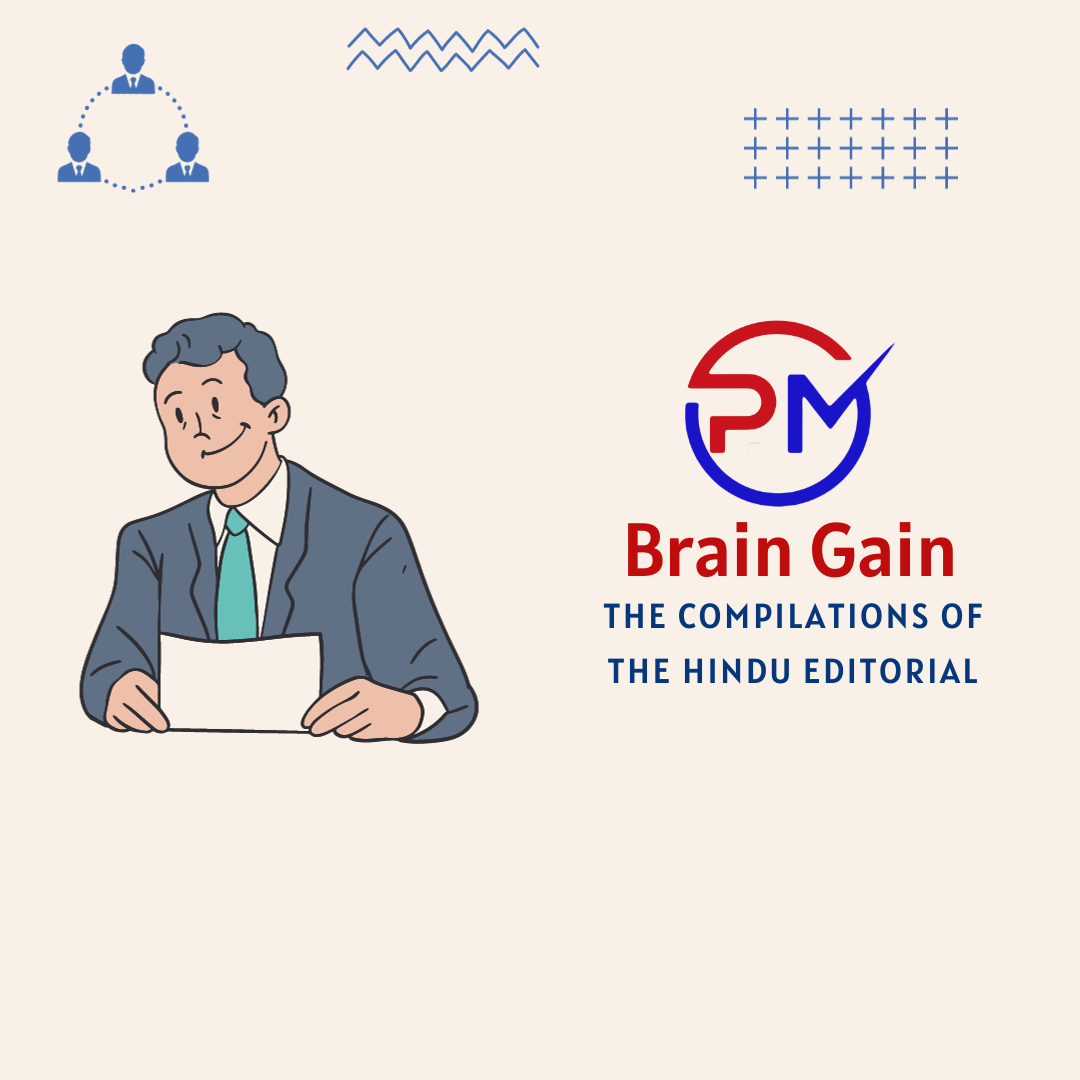Editorial 1 : Making sense of the employment challenge
Context:
- By proposing that Indians work longer to achieve a larger national output, N.R. Narayana Murthy, the founder of India’s iconic business house, Infosys, has issued something akin to a challenge to his compatriots. He proposed a 70 hour work week. To strengthen his case he has pointed to the experience of Japan and Germany after the Second World War, when citizens worked longer hours than we do on average in India today.
Output, demand and labour
- Ever since the Keynesian Revolution in economics, we know that output is determined by aggregate demand (AD), which is the demand for the total volume of goods and services produced in an economy.

( AD- AS Model)
- The demand for labour is entirely dependent upon this demand. There is no demand for labour independent of the demand for goods. Firms that employ more labour while aggregate demand has not increased will find themselves with unsold goods.
- So, an offer by workers to work longer hours will not ensure that they will find employment so long as firms are unwilling to hire them. Firms are guided by the profit motive and will employ more labour only if there is increased demand for their product. Unemployment reflects just that — workers willing to work but firms unwilling to employ them for it would be unprofitable for them.
- The role of demand for goods and services in determining the demand for labour may be seen in the layoffs in the ‘tech’ sector globally at the beginning of this year. Since then, Google and Amazon have shed hundreds of employees hired during the COVID19 pandemic, when the demand for their products was high due to the lockdown or the work from home (WFH) arrangement.
- In a variant of the ‘just in time’ strategy, whereby manufacturing firms are hesitant to hold an inventory of materials for long, software services companies optimise the number of employees ‘on the bench’, i.e., waiting to be deployed in production. So, when there is unemployment, to exhort workers to work longer hours is somewhat irrelevant, even when it is not meant to be callous.
The case of South Korea :
- South Korea was recovering from a war, though a different one from world war, and its resurgence was supported by considerable foreign aid received from the U.S., of which it was an ally. However, a strong nationalistic element accompanied their postwar reconstruction after a shared catastrophe imposed by ‘foreigners’.
- There was an additional dimension in Korea though — a dictatorship that saw the commandeering of able bodied men to work in the countryside on large scale projects of preparing the land for raising agricultural productivity.
- There is insufficient recognition of the fact that the manufacturing success of the east is underpinned by prior success in agriculture. The high working hours that contributed to this are unlikely to have been witnessed in a system in which labour was allocated according to consideration of profit.
- The case of high working hours in Germany and East Asia in the middle of the last century, backed by public funding and coercion, is not an experience helpful to understanding the present in India (a market economy where firms are driven by consideration of profit and coercion is ruled out).
Economic strategies for India
- Does it mean, then, that there is an iron law of the market pinning us down helplessly to high unemployment through low aggregate demand in India? Not at all. There are two strategies economic policy here can attempt.
- The first is to use the global market or world demand to grow the domestic economy, but India’s goods would have to be globally competitive. Here, the experience of South Korea is relevant.
- As most of the produced inputs into production are available to all countries via trade, a country’s competitiveness is ultimately determined by the productivity of its workforce and the physical infrastructure that complements labour. The strength and dexterity of a workforce, manifested as productivity, is related to its health and skill. In both these categories, India’s workers are at a disadvantage compared to the most successful economies of Asia.
- A second route to greater output and employment is to expand the domestic market — and thus aggregate demand. To see how this can be done, recognise that the economy produces both food and non- agricultural goods and services. These are placed differently in relation to our consumption needs.
- If food can be produced at lower cost, the real income of the majority of Indian households would rise. They would now have more to spend on non-agricultural goods and services having satisfied their need for food. This would generate the demand needed to spur production in the rest of the economy. And with this, output will also grow, and in turn employment, with or without the longer hours in question.
Conclusion:
- The proposal that Indians work for 70 hours a week is surely meant for those in the formal sector, where specified work hours and a minimum wage stipulation exist. Ethnographic studies of India’s informal sector show that in some of its segments, unorganised workers are already labouring this long at very low wages and without any such protection.
- Here, the challenge is to activate the long arm of the law to ensure acceptable working conditions that encompass fewer hours, higher wages, and more equipment to lessen the physical burden of labouring.
Editorial 2 : A renewed focus on emerging technologies
Introduction:
- Emerging technologies, an euphemism for capabilities that rely on a combination of cyber technology, Artificial Intelligence (AI), unmanned systems, and advanced computing, is in vogue among most militaries.
Emerging technologies for Indian armed forces:
- Recently, the Chief of the Army Staff said that the Army had identified 45 niche technologies in the field of military applications.
- Similarly, under ‘UDAAN’, the Indian Air Force (IAF) is using AI, cyber and virtual reality to address its operational, logistical, and training needs.
| Indian Air Force (IAF) Centre of Excellence for Artificial Intelligence (CoE for AI) under the aegis of UDAAN (Unit for Digitisation, Automation, Artificial Intelligence and Application Networking) was inaugurated in 2022. |
- The Navy, too, says that it is moving forward with emerging technologies, which includes an Integrated Unmanned Roadmap, while also encouraging indigenisation under project ‘Swavlamban’, Indian Navy’s Maiden Naval Innovation and Indigenisation Seminar.
- Not to be left out, the Defence Ministry, through ‘AIDef’– ‘Artificial Intelliegnce in Defence’ (AIDef) symposium and exhibition- has showcased its initiatives in this realm, which includes the Defence AI Council and the Defence AI Project Agency. Both these efforts are aimed towards incorporating AI into various allied organisations, such as Defence PSUs (Public Sector Undertakings) and the Defence Research and Development Organisation (DRDO).
A long way to go
- For these initiatives to be successful, the military must be cognisant that technology is not a silver bullet and should not be imagined as a ‘plug and play’ — readily adjusted to existing practices. Instead, it needs to be accompanied by organisational and doctrinal changes and a willingness to share data with the civilian environment.
- To some, emerging technologies is just the latest fad. Indeed, most accounts of the Russia-Ukraine war attest to the old fashioned dominance of the artillery, manoeuvre warfare, and infantry tactics.
- But emerging technologies represent a dilemma that militaries have faced since time immemorial — how to best respond to change. Effectively integrating emerging technologies requires the military to work more closely with civilians than ever before.
- Some call it “collaborative defence”, whereby the military partners with scientists, academics, technologists, entrepreneurs and the wider industry, as critical in incorporating such capabilities. From that perspective, India’s defence organisations and the military still have some way to go.
- To be fair, the Indian military’s focus on these emerging technologies is not new. India’s first drone platforms were inducted in the late 1990s by the Army followed by more procurements in the 2000s by the IAF and Navy.
- Military leaders have recognised the cyber threat for some time, pointing to issues such as ‘information warfare’. Through its indigenous space programme, India has launched communication satellites to improve its military communications capabilities.
Way forward: Change in approach
- First, jointness, defined as interoperability between the three services, remains problematic. Chief of Defence Staff (CDS) has an explicit mandate to create joint theatre commands (JTCs). While the strategic community waits for such a development, the need for interoperability is essential especially among the host of emerging technologies.
- Second, there is a need to revisit existing human resources practices in armed forces. For the most part, the Indian military prioritises generalisation over specialisation. This might work in conventional operations, but specialised technology requires greater technical expertise. The services should therefore give extended tenures and create promotion pathways for officers intellectually inclined towards this domain.
- Third, both civilian defence organisations and the military needs to be more open with sharing data, especially to fully realise the promise of AI. Traditionally, secrecy concerns have stymied data availability. However, one can create a structure with adequate safeguards, which allows civilians to work alongside the military to overcome such concerns.
- Fully realising the potential of emerging technologies requires altering existing organisations and approaches. Such changes should begin from the Defence Ministry. Instead of letting its efforts be led by generalist officers, the Ministry should be more open to incorporating technocrats and qualified personnel, if necessary, from the private sector and wider industry.
Conclusion:
- The current efforts in defence reforms in India has put the military on the road to perhaps its biggest transformation yet. Realising the promise of this vision would require greater willingness to engage with the talent that resides outside existing defence organisations.


